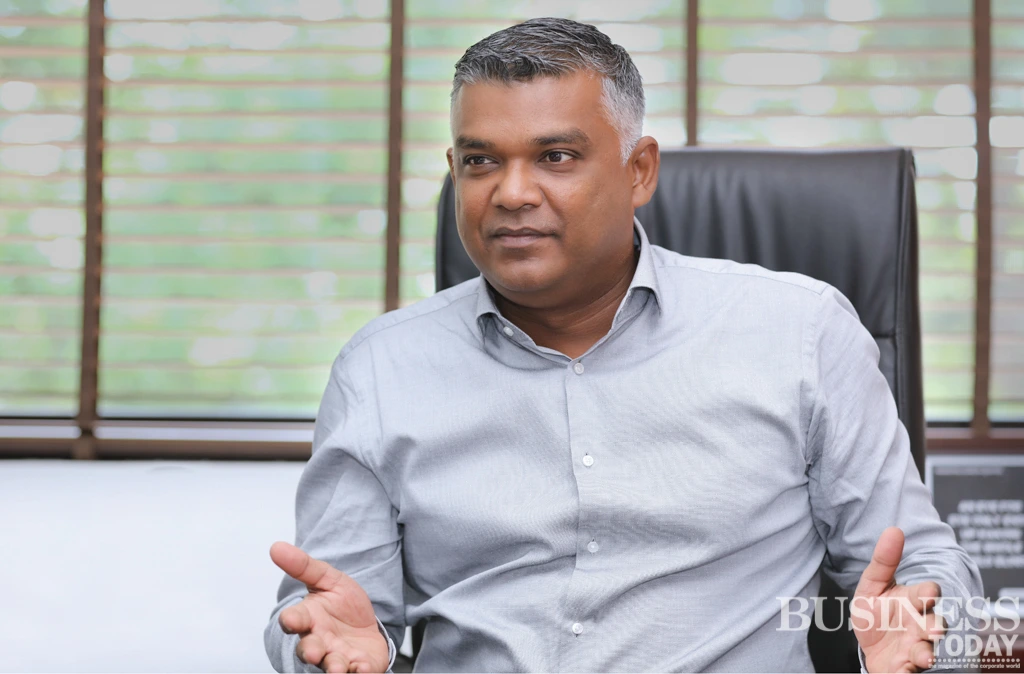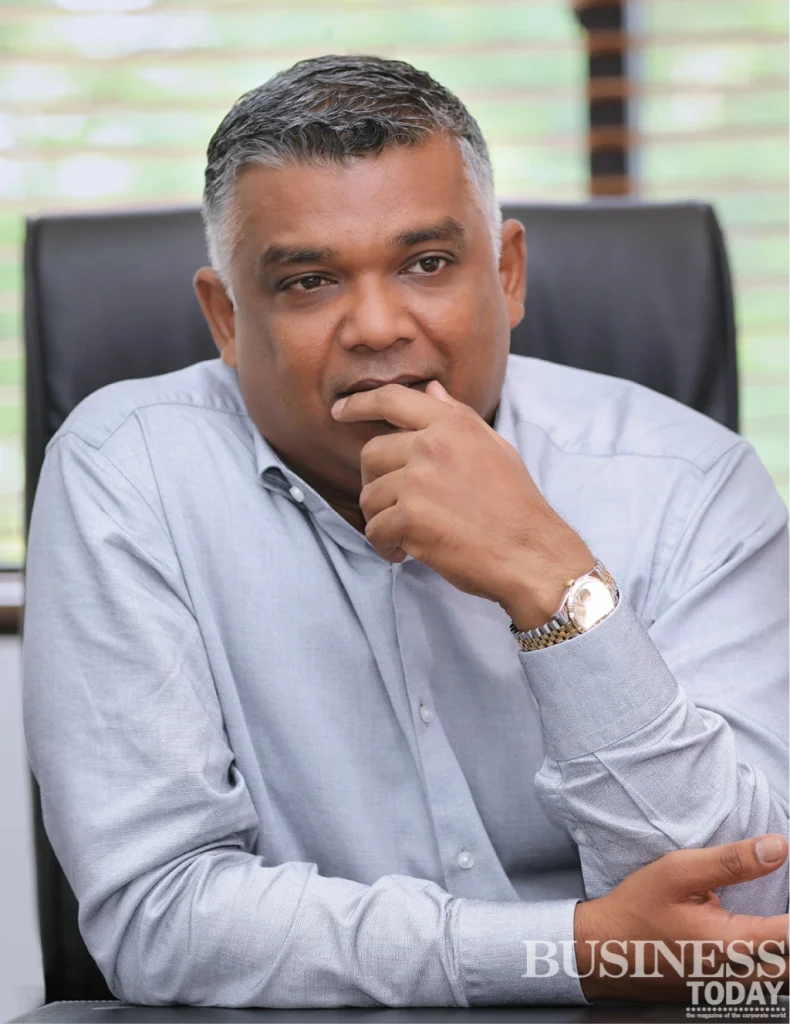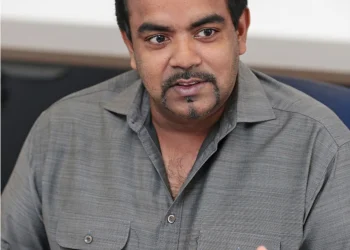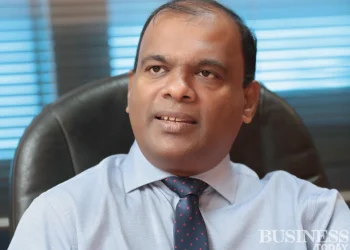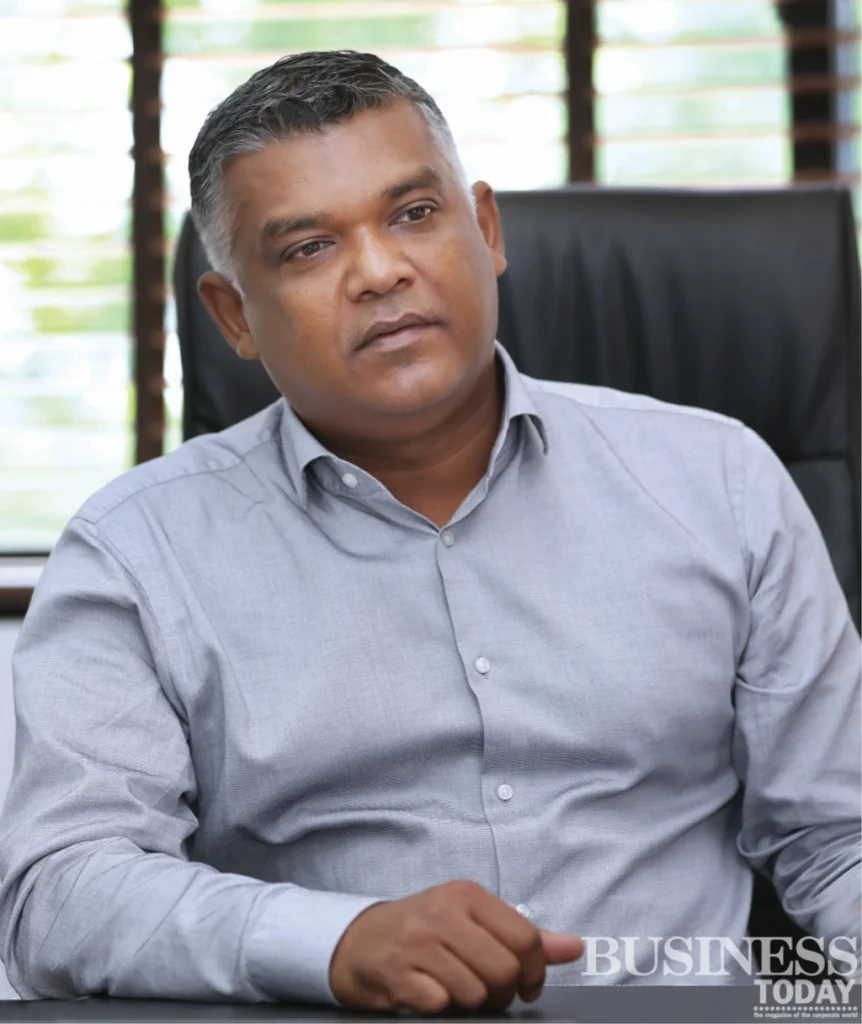
The State Pharmaceutical Manufacturing Corporation (SPMC) has silently but diligently made massive strides in developing and expanding the pharma industry in Sri Lanka. With increased production SPMC has been able to provide high-quality medicine to the people of the country. Having proven that pharma is in fact produced at reduced costs to enable reasonable pricing, SPMC has challenged big brands to do the same. Dr Sayura Samarasundera, Chairman, SPMC speaks about the journey traversed thus far and the progress made. He stresses that firm policy and regulations are necessary to ensure the sustainability of this massive and lucrative industry.
By Udeshi Amarasinghe
Photography Mahesh Bandara
Can you elaborate on the role and responsibilities of SPMC?
The State Pharmaceutical Manufacturing Corporation (SPMC) was established with a grant from the Government of Japan through JICA in 1987 and Dr Gladys Jayewardene was the first Chairperson of SPMC. It is the manufacturing arm of the State Pharmaceutical Corporation. SPMC was developed according to the concept presented by the late Prof Senaka Bibile in 1971. At the moment SPMC has the main plant in Ratmalana and four other plants established as public-private partnerships.
At the inception, we had a very small plant with a capacity of producing 500 million tablets and capsules, which are known as oral solids. That was the capacity of the plant, which was gradually increased with time. In 2015, the capacity increased to almost 1.8 billion. We received a 14 million USD loan through JICA and have been able to increase production capacity to four billion units.
In 2015, We Developed A Concept, To Provide A Buyback Guarantee To Any Investor That Enters This Industry. For An Investor Who Established A Manufacturing Plant, They Were Given A Ten Year Buyback Guarantee.
In the past few years, we have seen great progress at SPMC such as increased production and an improvement in turnover. How was this possible?
We import 800 million USD worth of pharmaceuticals annually to the Government. From this only about 25 percent is manufactured in Sri Lanka. Our aim by 2020, is to manufacture 100 percent of the essentials, which will be 80 percent of the total pharma.
In 2015, we developed a concept, to provide a buyback guarantee to any investor that enters this industry. For an investor who established a manufacturing plant, they were given a ten year buyback guarantee. Public-Private Partnerships (PPP) were given a 15 year buyback guarantee. In PPPs the Government has a ten percent ownership, which is similar to the golden share. The private company was given a 15 year buyback guarantee according to a formula, which is cost plus 20 percent margin. Through this initiative, we have been able to add approximately 2.2 billion rupees worth of pharma during 2018. This means that 2.2 billion rupees worth of pharma was not imported but produced within the country.
We are also looking at establishing manufacturing plants to European and American standards. The newest plant in Horana produces antibiotics. That is injectable antibiotics referred to as dry powder injectable that includes Penicillin groups. This particular plant established with European Good Manufacturing Practices (GMP) has the capacity to manufacture three times the capacity of the requirements of Sri Lanka. Their target is to manufacture for the Sri Lankan market requirement for the buyback guarantee and then to promote the excess products for the export market as well. For the buyback guarantee there is no marketing or logistics required because the Government purchases the total requirement. The companies recover their costs as well as save, so the next step would be to venture into the export market.
The turnover and profit recorded since we started operation in 2015 have been impressive; our turnover in 2016 was approximately two billion rupees; in 2017 this increased to 3.1 billion rupees and last year alone we recorded 4.8 billion rupees. SPMC is one of the very few Government corporations that has recorded a 45 percent increase in turnover. We have been able to make such progress because of the new plants that have been established in selected areas, which are contributing to the total.
In 2017, our monthly turnover was about 250 million rupees. At the moment it has gone up to about 650 million rupees. For 2019 I am targeting a total turnover of seven billion rupees. The profits have remarkably gone up because of the development of the industry.
As The Government Pharma Manufacturer We Have To Provide A Service To The Younger Generation And Provide Them The Opportunity To Gain Experience At Our Facilities.
SPMC products vs international brands?
Raw materials are the key factor in the production of pharmaceuticals. We procure raw materials only from suppliers who have the WHO GMP standard. The raw material that we use is the same as what is used by European manufacturers for most of our products. The manufacturing process is included in the GMP guidelines.
Basically, if we compare branded generic pharma that is imported and the generics manufactured by SPMC, I do not see a big difference between the two. Like I always say most of the time the consumer pays for the brand name but of course, I do not say that all the products that are imported are good, there are certain pharmaceuticals, which are actually cheaper than the raw material price. The reason that such products enter our market is that we do not have a large scale quality control lab in the country. Due to this gap, all imported products cannot be tested. The Government is now in the process of setting up such a quality control laboratory. All the products that are manufactured in Sri Lanka are tested and distributed. As such we rarely have any quality issues.
What about the status of the manufacturing facilities in Sri Lanka?
Our next stage is to develop policy guidelines on the set up and operations of pharmaceutical plants. We wish to develop a framework for five years that will include a road map where we supply the total requirements of the Government and ensure that the Sri Lankan numbers are delivered. Thereafter we will focus on the export market.
In terms of multinational companies even though for example their brand is European, the products are manufactured in factories in India or Bangladesh. Therefore, the next step for Sri Lanka is to set up production facilities with EU or US FDA standards and while producing the requirement for the Sri Lankan Government, they can be contract manufacturers for big brands. If you look at the syrup market and liquids, we have about six plants that produce syrups, but still another 60 percent is being imported because the market is brand driven. As we have the capacity I would like to look at the possibility of encouraging international brands to come and manufacture within our facilities. By doing so we can come to a level in another three years where a minimum of imports is ensured. To achieve this goal, we need high quality and high standard manufacturing plants.
Can you elaborate on the available human resources, expertise, knowledge, and skills in the industry?
This is an important area that we are focusing on. To set up a pharma manufacturing plant it takes about two years. One of the main concerns for any investor is whether we have the required skilled labour. They all think that we might have to recruit skilled labour from India. To cater to this need we have established a training school in Bulathsinghala specialised for pharma. Most of the private sector companies would allow outsiders to work in their plants and do internships. But as the Government pharma manufacturer, we have to provide a service to the younger generation and provide them the opportunity to gain experience at our facilities. Every six months we recruit about 30-40 individuals with the minimum level of required qualifications and we train them. Therefore, when investors establish manufacturing plants we will be able to provide the required skills with some form of experience. In terms of highly qualified consultants, yes we will have to recruit foreign expertise as we may not have the technology or expertise in the manufacturing of certain products. If we do recruit foreign experts, the working mechanism will be such that they will train our people and then go back.
We Have A General And An Antibiotic Range. We Are The Only Producer Of Amoxicillin In Sri Lanka For The Government.
In terms of equipment that are used at SPMC?
We use Japanese or Korean machinery at SPMC. Japanese equipments are workhorses and these have been working efficiently since 1987. However, an investor has to consider the cost of production. If you take Indian or Chinese machinery the cost would be very much less. My advice for an investor is that the machinery required will depend on the product portfolio. You cannot be a producer of a lower range product and have the most expensive equipment because that cost cannot be added to the product. If you decide to manufacture a lower range product, then an Indian or Chinese machinery will be more feasible. Because your initial cost will be less and thus the cost of production will be reduced as well. For those who wish to manufacture European standard high-quality products then, of course, they will have to acquire the best machinery made in Europe or Japan.
Can you elaborate on the product range that is manufactured at SPMC?
We have a general and an antibiotic range. We are the only producer of amoxicillin in Sri Lanka for the Government. And we have another set of antibiotics that we supply to the Government as well. We are in the process of setting up a facility to produce cephalosporin antibiotics. Presently, cephalosporin tablets are manufactured by another Sri Lankan company, which supplies the total Government requirement. The new facility is being built mainly to provide to the private sector and also possibly for exports as well.
In terms of the general medicine range, we have almost 57 products starting from medication for diabetic, lipid to pressure, the total range is available. In terms of volume, our biggest moving products are prednisolone and metformin. Our products are supported by GP practices around the country. We have our own brand of paracetamol and we produce about 600 million tablets. We produce many of our other products with our joint venture partners. With the inception of our joint venture liquid plant in Ja-Ela last month we are able to produce liquid medication as well.
We launched another plant in Kandy and it was completed with an investment of about eight million USD. At this facility, high-end products such as anti-viral medicines, which are about 800 rupees per pack are manufactured. These are big budget products that Sri Lanka used to import. Today these are manufactured in the country as joint venture projects.
SPMC manufactured pharmaceuticals come in our packing, with the SPMC and Government logo. The joint venture partner is a 100 percent Sri Lankan company that is what is special about it. 90 percent of the plants that is coming up are owned by Sri Lankan companies.
However, technical know-how should come from abroad. We do not have it. The techno partner might be European or Indian, but the main shareholder is always Sri Lankan.
The Minister Of Health, Rajitha Senaratne, Introduced The MRP So That The People Of This Country Would Be Able To Purchase Medicine At A More Affordable Price.
There has been much discussion on the Maximum Retail Price (MRP), can you elaborate the rationale behind this?
The Minister of Health, Rajitha Senaratne, introduced the MRP so that the people of this country would be able to purchase medicine at a more affordable price. At the time we introduced the MRP, many of the big brands said that they could not match the price and that they would leave the market. This could be true if they had a market share of about two percent. However, if you look at the majority of the pharmaceutical the big players can easily provide medicine at the MRP.
We conducted a feasibility study as we were going to introduce the manufacturing of cephalosporin and we decided to convert the production to a particular antibiotic for which the existing brand was threatening to leave the country. There are three suppliers in the world that provide this particular raw material as well as the intermediate. We spoke to them and we got our pricing done, the production cost came down to 11 rupees. This was the product that was selling for 70 rupees in the market, which with the introduction of the MRP was 30 rupees. Since the prices reduced, and because they have a good brand name the sale volumes have increased to about 70 million tablets. Therefore, the big brands are anyway making a profit so they should not complain about it.
Another example is paracetamol; a tablet used to be 3.20 rupees then we brought it down to 1.30 rupees. This big brand too said that they are leaving the country. We decided to manufacture our own paracetamol with good quality packaging. SPMC cost of production is about 85 cents. With our profit, we can still sell it at 1.30 rupees while doing marketing as well. The numbers they sell are at least 800 million tablets per year with a margin of two rupees at that time, which is 1.6 billion rupees for one product.
It is unavoidable that there would be resistance to such far-reaching measures. The price may have come down but they have not reduced the quality of the product. They have only reduced the marketing of the product. With brands, it is all about marketing to show that one product is better than the other. If you manufacture a product with a plant that has the required GMP and the raw materials too are provided from GMP certified source, then I do not think there is any reason we should go for a brand but consider the generics only.
But pharmaceuticals are brand oriented?
Major countries prescribe generics. Why? Because if you take one product, those countries will have only 20 products for a certain category registered in their country. Therefore, the quality of all 20 is tested and they know it is good. The problem in Sri Lanka is that we have about 100 registered products for a particular category. Therefore, you never know what you are having if you go for generics. You have to make sure that the product is of good quality. We have a three-rupee product and a 20 cents product. That is where we went wrong. That is why we cannot get into generics.
The Government is already streamlining the issuance of registrations for pharmaceutical products. To the Government, we provide only generics because we are sure of the Sri Lankan production. And if there is a requirement for brands we will set up the industry in a way that the big brands can manufacture their product in Sri Lanka.
This is the mechanism that they have adopted in India. If you take most of the European brands their manufacturing plants are in India. They do not even own them. We call those contract manufacturing. We should aim at securing such business. We will have our own brands with local interest and also the generic market as well.
We spend about 55 percent on raw material and packing. That is because we are still importing those requirements. The next step is that we are going to set up an API, that is an active pharmaceutical ingredient zone in Sri Lanka. In Vishakapatnam, India there is a massive API zone, which has been built with proper affluent systems. This is an area that we can attract investors. The reason as to why we do not want to give this directly to the private sector is that the Government should control the API production because it generates pollution. In countries such as China, there has been a lot of pollution and they have relocated the API plants to another area.
Our vision is to set up the API zone in Hambantota by acquiring about and 400 acres because the Port and other logistical facilities are available. With the Government setting up raw material plants, the pharmaceutical manufacturing facilities will have own requirements in Sri Lanka. In doing so, we will reduce costs. This will enable us to give competitive rates when exporting our products.
We Will Have Three Segments In Terms Of Policy; Number One Would Focus On The Quality Segment, Two Is Pricing And Three Is The Sustainability Of The Industry.
Are larger corporates investing?
During our first phase of implementation, the larger Sri Lankan corporates did not think that we would make it. Today, we have corporates and business leaders building massive plants. All other players are pharma-related companies who have invested because they know the potential.
The only challenge that we envisage is that with the entrance of big players, the smaller companies who have been in the industry for years will be taken over. The Government needs to introduce regulations to curtail this.
An area we need to develop is logistics. We are trying our best to set up a warehouse facility for pharma within the Ports Authority. This is an area that the Government needs to focus on because about four ministries have to get involved. The Treasury too should promote public-private partnerships. If you look at the imports of finished goods, there are no taxes imposed. But importation of raw materials has taxation. These are areas on which the Treasury should actually work on.
In terms of policy what more can be done?
We will have three segments in terms of policy; number one would focus on the quality segment, two is pricing and three is the sustainability of the industry. In the quality segment, we need to have strict guidelines and policy where these will not only focus on pharma product quality but also environmental and socio-economic issues. Ensuring the high-quality level of the industry means we are also ensuring the quality of life of the people. We have also requested the Minister of Health to form a committee where lab and quality control systems are implemented for all the pharma manufactured in Sri Lanka. We want to have a trademark as Ceylon Pharma similar to Ceylon Tea, which will ensure the quality of the pharmaceuticals produced. In terms of pricing,ß with the volume of Sri Lankan manufacturing increasing, there will be a decrease in imports, which will result in less competition. In this manner, the low-quality pharma entering the country will be curtailed. There should be a policy indicating the manner in which you are being paid when an investor establishes a plant. There has to be a consistent pricing policy, which is regulated. If not what would happen is that we will create our own industry and reduce imports, but we never know in five years it might be cheaper to import. Therefore, pricing should be consistent.
Sustainability of the industry is very important. It means that when a Government changes, policy should not change because massive investments have been made and this is the only industry that has made such progress. Furthermore, this sector requires very specific technology, skills and the provision of employment. Therefore, the sustainability of the industry should be looked at by any Government.
Pharmaceuticals is an 800 million USD business for the Government. By establishing this industry, we are in fact stopping another person’s business. Last year alone we manufactured 2.2 billion tablets, which means we stopped the importation of that quantity. This is not going to be easy. The sustainability of the industry should be focused upon because there will always be people who would want to stop this.
President Maithripala Sirisena and Minister Rajitha Senaratne have given their fullest support. They do not interfere, even if certain importers try to pressurize them they will never take their side. We would not have been able to achieve what we have in the past few years, if not for them. This has always been the President’s and the Minister’s vision to develop the Sri Lankan pharmaceutical industry. There was a lot of red tape and resistance. It was seen as destroying one industry and starting another.
An industry that was here since the 1970s, which was an import oriented distribution system is being stopped and for the well-being of the country’s economy, the local industry is being developed. Without the vision and strength of the President and the Minister, we would not have been able to do so. Everyone who attempted to do this did so with great personal risk. It is a huge industry and you cannot do this without the Government’s support.
The President having been a Health Minister understood the challenges and importance of developing the industry. Importers might be unhappy because manufacturing is happening in Sri Lanka. But that is a risk to be taken by any strong Minister. Look at the initiatives taken in terms of tobacco; these are very difficult to take because there is so much pressure. There is a lot of money involved. These industries can spend money in various other ways to stop this happening. That is how the industry works, as such the Government has to be firm.
Sustainability Of The Industry Is Very Important. It Means That When A Government Changes, Policy Should Not Change Because Massive Investments Have Been Made And This Is The Only Industry That Has Made Such Progress.
The people of this country are not aware that there has been much progress in the industry. Why is that?
Yes, this is an area that we have to focus upon. It is not only for SPMC but also for the Ministry of Health in general. Through the work of the Ministry of Health, we have been able to elevate the quality of life of the people of Sri Lanka. We should market ourselves more.
Plans and way forwards?
I am a medical professional. I have received a professorship from the Institute of Innovative Technology at the University of Moscow, Russia. I have been the Chairman of NARA from 2010 to 2014. My appointment as the Chairman of SPMC is my second chairmanship.
The future is for Sri Lanka to be self-sufficient in terms of the pharma industry. This does not necessarily mean only the production of medication but also includes other non-pharma products such as orthopedic implants, surgical gloves, syringes, sample containers and much more.
There is so much potential for Sri Lanka, where we can manufacture in Sri Lanka without spending funds on the importation of such products.
We should always focus on quality and maintaining standards. We will first ensure that the Sri Lankan market is supplied and then we will import. We can supply pharmaceuticals to Africa and Myanmar, which provide huge markets. We should make use of the FTAs we have with other countries especially India and Pakistan. There is a huge market out there, we have to take up the challenge.
